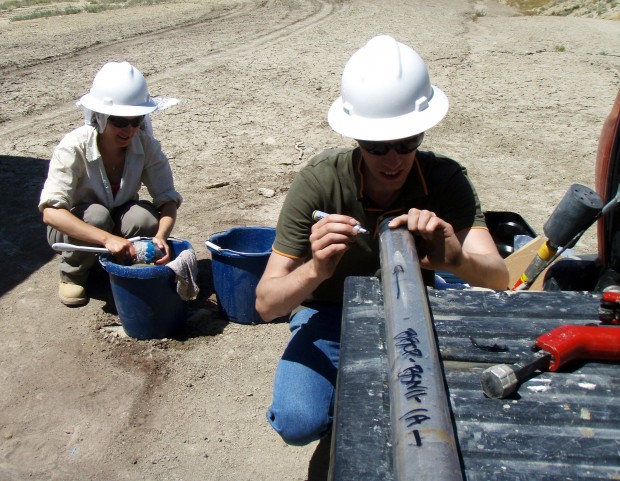Global Warming warnings from the Palaeocene-Eocene Thermal Maximum
An event that warmed Earth’s climate almost 56 million years ago resembled modern, human-caused global warming much more than previously believed.
The PETM involved two pulses of carbon to the atmosphere, University of Utah researchers and their colleagues found.
The Paleocene-Eocene thermal maximum, or PETM, can provide clues to the future of modern climate change.

The good news: Earth and most species survived.
The bad news: It took many thousands of years to recover from the event, when temperatures rose by 5 to 8 degrees Celsius (9 to 15 degrees Fahrenheit).

The warming took tens of thousands of years, and then the Earth took over 100,000 years to recover.
The big difference is that the PETM took a long time, but the current production of gaseous carbon compounds is happening over a few hundred years.
To look at the climate in the PETM, University of Utah researchers drilled down more than 1,200 feet in Wyoming's Big Horn Basin and extracted cylindrical sections of rock called core samples.

The PETM involved two pulses of carbon to the atmosphere, University of Utah researchers and their colleagues found.
The Paleocene-Eocene thermal maximum, or PETM, can provide clues to the future of modern climate change.

The good news: Earth and most species survived.
The bad news: It took many thousands of years to recover from the event, when temperatures rose by 5 to 8 degrees Celsius (9 to 15 degrees Fahrenheit).
The warming took tens of thousands of years, and then the Earth took over 100,000 years to recover.
The big difference is that the PETM took a long time, but the current production of gaseous carbon compounds is happening over a few hundred years.
To look at the climate in the PETM, University of Utah researchers drilled down more than 1,200 feet in Wyoming's Big Horn Basin and extracted cylindrical sections of rock called core samples.
